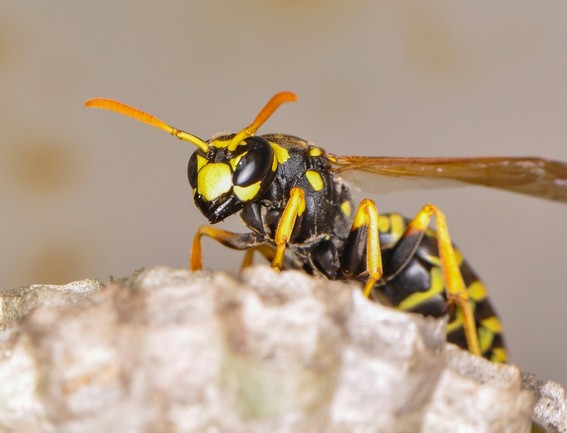
The first symptoms that are usually noticed when stung by a wasp are severe pain and burning at the site of the sting. The skin over the area of the sting will then start to itch and develop into a swollen bump with a small spot in the center. In some cases, a small rash may develop at the site of the sting, and dizziness may also occur . If the person who was stung has a mild allergic reaction,
People who are stung by stingers and do not have a severe allergic reaction can use first aid to relieve symptoms at home. Most symptoms gradually improve and disappear within 1 week. However, if stung in the nose, throat or lips, แทงบอล UFABET ราคาดีที่สุด ไม่มีขั้นต่ำ see a doctor immediately, as these areas are at risk of severe symptoms.
However, people who are stung by a wasp may also have a chance of getting an infection or a severe allergic reaction ( anaphylaxis ). In cases of infection, those who are infected will experience chronic pain and swelling for several days. Those who are severely allergic will experience some unusual symptoms that are severe immediately after being stung, such as:
- Swelling of the face, lips, or throat
- A rash and itching appear on the body, even in areas that have not been stung by a wasp.
- Nausea, vomiting, abdominal pain, diarrhea
- Can’t breathe
- Dizziness, feeling faint
- Abnormally fast or slow pulse
- Unconscious
If infection or severe allergic reaction is suspected, the person stung should seek immediate medical attention. For those with a history of severe allergic reaction to a wasp sting, while visiting a doctor, if epinephrine is available, inject it as soon as symptoms of an allergic reaction begin. Follow the directions on the medication label carefully.
How to give first aid when stung by a wasp
For those who have been stung and have not had a severe allergic reaction or signs of infection, follow these steps to relieve sting symptoms:
1. Avoid scratching or rubbing the stung area and immediately wash the wound with soap and water to remove bacteria and wasp venom.
2. Apply cold compresses to the stung area for 10 minutes and then rest for 10 minutes, alternating for 30–60 minutes to relieve pain and swelling.
During the day, choose to wear clothing that is not too tight to protect the wound from friction, which can lead to irritation and itching. Also, keep the wound area clean to reduce the risk of infection.
In addition, those who have pain or swelling can also take over-the-counter medications such as Chlorpheniramine , Ibuprofen, Paracetamol, or may use a topical medication such as Calamine to relieve symptoms, but should consult a pharmacist first for safety.
The above first aid methods are only suitable for those who have been stung and do not have severe allergic reactions or infections. In the case of those who have signs of infection or severe allergies, they should see a doctor immediately to receive appropriate treatment, especially those who have a history of severe allergic reactions from being stung by wasps or those who have been stung by multiple wasps at the same time.
In addition, to prevent dangers from being stung by wasps, you should always observe your living area for wasp nests. However, if you find a wasp nest, you should not try to chase it away or get rid of it yourself. Instead, contact the agency that is responsible for this matter, as getting close to a wasp nest can increase the risk of being stung by wasps.